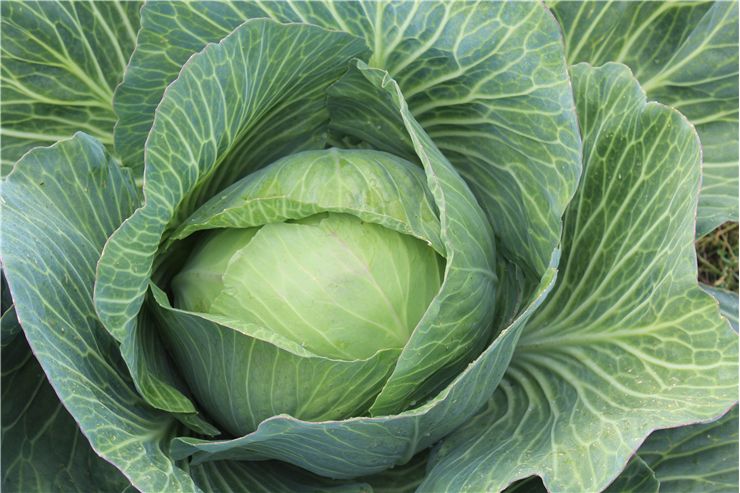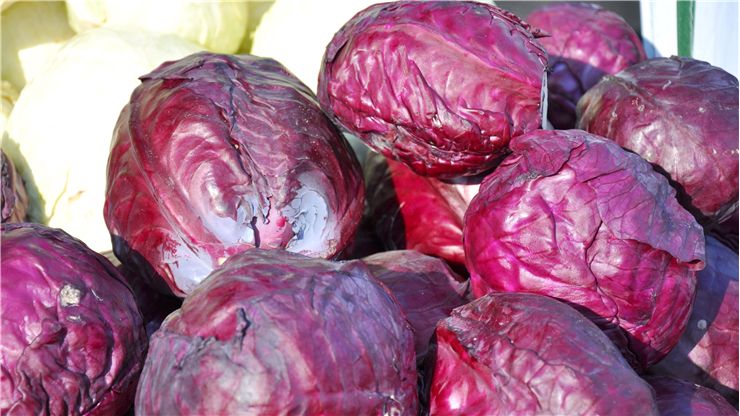Facts and Health Benefits of Cabbage
- Cabbage is a biennial plant which means that it takes two years to complete its biological life-cycle but is grown as an annual vegetable crop. It has green or purple dense-leaved head, and it can be eaten raw, steamed, fermented or cooked.
- Cabbage is also a part of many dishes around the world, and people eat it throughout the year.
- People eat cabbage since the earliest days of civilization, and it grew practically everywhere where the soil is rich, and there is enough water.
- There are more than hundred different cabbage types around the world. The five most common types of cabbage are plain cabbage (also known as “Drumhead” or “rounded head” cabbage), green cabbage, red (or purple) cabbage, Chinese cabbage, and Savoy cabbage.
- Cabbage is planted as seedling between spring to late autumn.
- Cabbage was an important part of a diet on the ships from the end of the 18th century because its high vitamin C prevented scurvy – avitaminosis (lack) of vitamin C.
- Purple cabbage has high quantities of phytonutrients work as antioxidants protecting DNA and cell membranes from free radicals.
- Russian peasants sustained themselves during the harsh winters between 14th and 18th century by eating strong soups made of fermented cabbage.
- A nation with the largest production of cabbage is China while the Russia has the highest annual per capita consumption.

- Characteristic (and not too pleasant) odor of a cooked cabbage comes from hydrogen sulfide gas that is produced when the cabbage is overcooked. Flatulence comes from gasses that are the result of fermentation of cellulose fiber.
- Cabbage should not be bought pre-cut or shredded because it starts to lose vitamin C the moment it is cut no matter how well it is packed. It should also be eaten as fresh as possible because it loses other beneficial ingredients while it is stored.
- Cabbages are 90% water, have virtually no fat and are a great source of vitamin C, vitamin K, and dietary fiber. Half a cup of shredded cabbage has a daily recommended dose of vitamin C, which builds immunity.
- Cabbage has both soluble and insoluble fiber which are both beneficial. Soluble fiber lowers the sugar in blood as well as the blood pressure. Insoluble fiber regulates bowel movements. Some medical doctors consider cabbage one of the best sources of fiber for human consumption.
- As for vitamin K, which for instance helps blood coagulation, half-a-cup of shredded cabbage has 68% of recommended daily allowance of this vitamin for men and 90% for women. This vitamin also helps production of sphingolipids which are the myelin sheaths around nerves which in turn protect nerves from damage and prevent diseases of neural degeneration like Alzheimer’s disease and dementia.
- Flavonoids, which can be found in red cabbage, act anti-inflammatory.
- There are indications that anti-oxidants, like indole and isothiocyanate compounds, can prevent cancer according to the National Cancer Institute. They can inhibit the growth and migration of tumor cells and can even trigger the death of potentially cancerous cells.
- One cup of shredded red cabbage also has 33% of recommended daily intake of vitamin A which can be found there in three types: beta-carotene, lutein, and zeaxanthin. Beta-carotene is crucial for the health of the eyes.
- One more ingredient in which cabbage is rich is iron. Iron is a part of myoglobin which carries the oxygen throughout the body and feeds the cells. Iron also helps some proteins and enzymes to produce energy and replicate DNA.
- Low amount of calories in cabbage can help people that want to lose weight in a healthy way. They can eat larger quantities of cabbage and still lose weight. High amount of fiber is also beneficial for the same goal.

